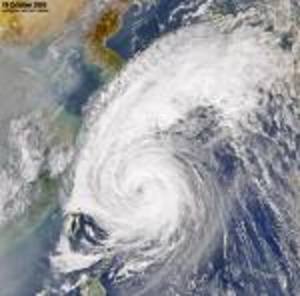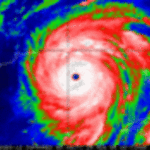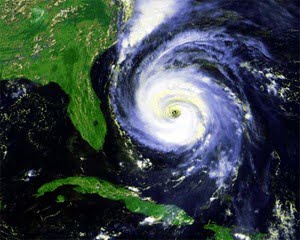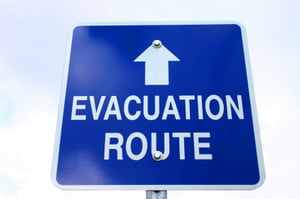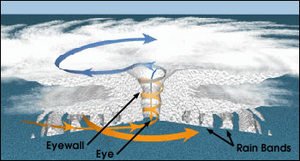Do you know the difference between a hurricane, a typhoon and a cyclone? People often think they are one in the same. It is confusing enough to try to keep up with the hurricane season and all the terminology, without having to decipher the difference between the three. All storms are the same after all, or are they? I found out that while they share common characteristics, they are still different. How are they different? Basically, the location is what gives the storm it’s name.
If a storm was to form in the Atlantic or eastern Pacific Ocean, we would call it a hurricane. So basically every storm that endangers the United States is a hurricane. In recent years, we have all become quit familiar with hurricanes and their powerful force.
A typhoon is generally any storm that begins in the Western Pacific. So a storm that threatens Japan or the islands of Guam or the Philippines is called a typhoon. Winds from a typhoon usually are stronger than a hurricane, however they endanger far less land area due to their locations.
Cyclones are storms that begin in the Southern Pacific. They only are generated west of 160 east Longitude. They are not as prevalent as hurricanes because of the cold water temperatures. Generally, water temperates must be over 80 degrees in order to be conducive to any storm.
Recently however, there has been some controversy among the meteorological community as to the definition of a hurricane, typhoon, and cyclone. Some experts now refer to either a hurricane or a typhoon as a cyclone. Technically, when the definition of a cyclone is looked up in the dictionary, it states it is a storm with a mass of thunderstorms centered around a mass of rotating air, with an eye or center of calm air and winds, with blue skies. It states that the smaller the eye, the stronger the storm. This sounds like the definition we would attach to a hurricane.
The interesting thing that a lot of people are not aware of, is that a storm that begins north of the equator rotates clockwise and a storm that begins south of the equator rotates counterclockwise. To complicate issues, my question has always been, can a storm cross over the equator and if so, does the rotation change? No one has been able to answer this question for me. The only answer I can get is that air currents will not allow a storm to cross over equatorial lines.
So in essence the three storms are the same. If you take a hurricane off of the coast of Florida and dump it near Japan, you have a typhoon. If you take that typhoon and drop it in the middle of the Indian ocean, it would be called a cyclone.
One thing is clear though, the closer a storm generates to the equator, the greater chance it has of being a strong storm, whether it is a typhoon or hurricane. This is due in part to the currents of the oceans, the air currents, and the water temperature. This is why typhoons are usually more dangerous than a hurricane. They generally generate closer to the equator.
No matter what you call them, they all are dangerous storms. Hopefully, the numbers of all three will be very low this year. I believe we all need a break to recover from the recent hurricanes, typhoons, and cyclones that we have had.
